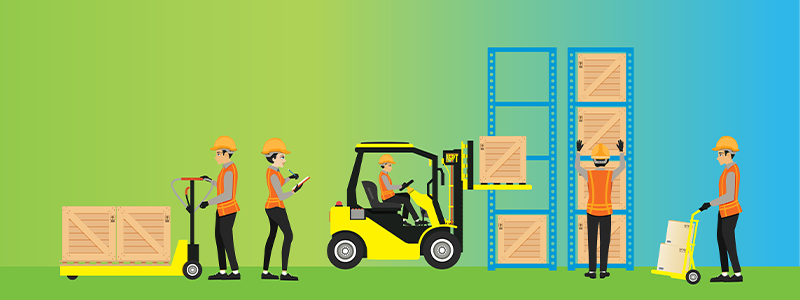
If anything, 2020 has taught us that innovation is critical for business survival and for the most part, the use of integrated technology has been the differentiating factor between a company succeeding or failing during the pandemic. So, as we turn our attention to 2021, what lessons can be learned and what technology trends will emerge that will drive business performance in the transportation & logistics (T&L) sector to help meet customer needs?
1. Visibility across the supply chain is key
With only 1 in 5 companies having total visibility into their mobile and IoT deployments, businesses that don’t employ analytics to enable this visibility will struggle to achieve their full potential. Insights from apps and user analytics can improve performance and serve customers better, delivering unprecedented levels of visibility and helping to forecast when to scale capacity up or down and adjust operations.
When T&L companies adopt a mobile-first strategy, supported by powerful analytics, they can obtain end-to-end visibility across the supply chain, ensuing that every cog in the wheel is overseen and managed correctly. This delivers critical insights such as real-time decision-making, which can improve workforce productivity and create better and more responsive experiences.
Within the fast-paced T&L sector, companies must adapt to be successful. Visibility is thus the key to simplifying workflows and driving efficiency in operations. Without visibility, businesses could see a devastating impact on their operations, especially now that consumers expect quick and trackable deliveries.
2. The in-store experience must be seamless
Shopper loyalty is harder to attract than ever before. One poor in-store shopping experience can lead to a shopper abandoning a sale and taking their business to a competitor. In 2021 and beyond, retailers need to deliver frictionless in-store experiences and avoid stock issues at all costs. Retailers will also be compelled to get customers through the shopping process as quickly as possible to adhere to their capacity limits. Having product in stock that can be easy to find will help this process run smoothly. Retailers will struggle to sell what they don’t have, or can’t see, and any lack of stock visibility risks lost sales opportunities. The coming year will demonstrate the importance for retailers to have real-time insights into their product inventory and logistics, so they can adapt to changes in consumer shopping patterns and meet customer needs.
3. The e-commerce boom
Throughout the pandemic, there has been an accelerated move to online shopping. As people have been unable to visit physical stores, many have turned to e-commerce, which has meant that fast shipping is no longer a luxury, but an expectation. Last-mile delivery has also been a global, industry-wide challenge faced by T&L companies during this time as it is traditionally the slowest part of the delivery process, yet the element that has the biggest impact on consumer satisfaction. When deliveries do not show up on time, customers complain and, with multiple options, they won’t hesitate to take their business elsewhere. It’s also the most expensive part of the supply chain process, accounting for 53% of the total cost of shipping and up to 41% of the total supply chain cost.
The continued rise of e-commerce has aggravated the cost and inefficiencies of last-mile delivery. This has led to customers expecting fast and often free delivery regardless of location. This places businesses under pressure to optimise delivery routes and processes. If they don’t, they risk disappointing their customers and losing out to competitors. Through all of this, technology has been the key tool for businesses to adapt to the rise in online shopping and the demand from consumers by working to streamline business processes and provide real-time visibility.
4. Integrate a mobile approach for business continuity
Keeping up with the kind of accelerated consumer demand that we’ve seen throughout the pandemic can be managed, as long as a business has an integrated mobile approach. By implementing a robust mobile-first strategy, companies can provide better customer experiences and ensure they increase speed, minimize costs and increase transparency in the delivery channel.
In 2020, the T&L companies that invested in up-to-date technology and ensured their staff were using an integrated mobility and IoT management platform, saw not only powerful customer retention, but were also in a better position to grow.
5. Mobile technology is key to successful growth
Overall, technology adoption will be a critical factor for business success in 2021. From research undertaken by SOTI, 65% of all T&L businesses agree that their organization would benefit or has already benefited from having an effective mobile-first strategy for last-mile delivery, while 58% agree that it is an effective strategy that has reduced operational costs. Our research also showed that 29% of all senior executives said that introducing or growing a mobile-first strategy is their current priority to driving their business forward in 2021.
Updating technology processes will ensure that T&L operators are positioned to succeed in a post-pandemic world. It is also the best way to ensure customers are satisfied with the experience they receive and evolve from first-time shoppers into long-term customers.
Want more insight into the trends shaking up the T&L industry, then stay tuned for SOTI’s new T&L report launching in April 2021.
To find out more about how SOTI can help your business prepare for changes in the T&L industry in 2021, visit our website or contact us here.



